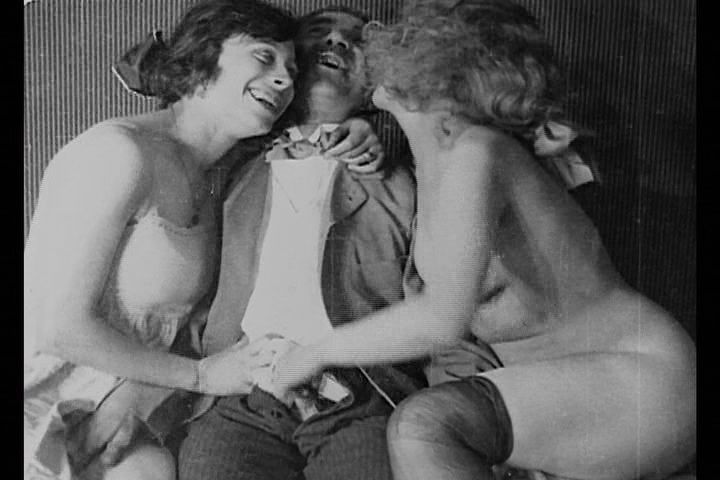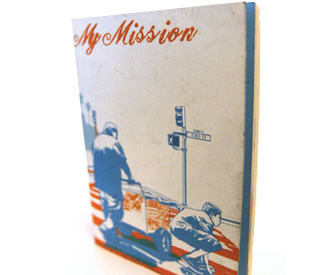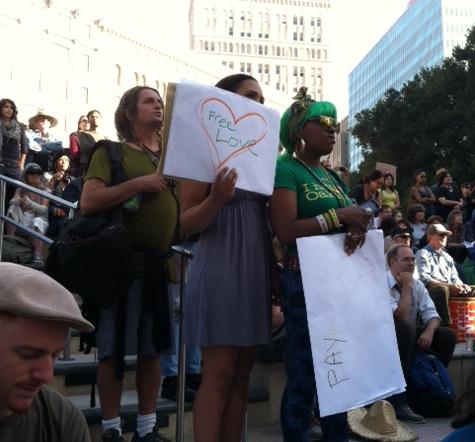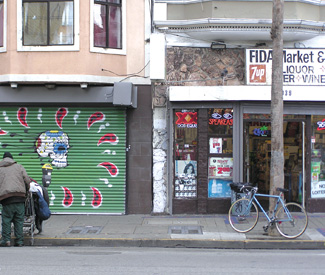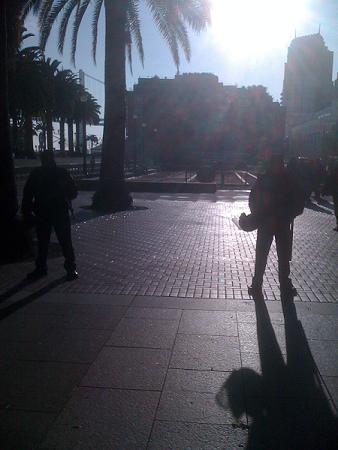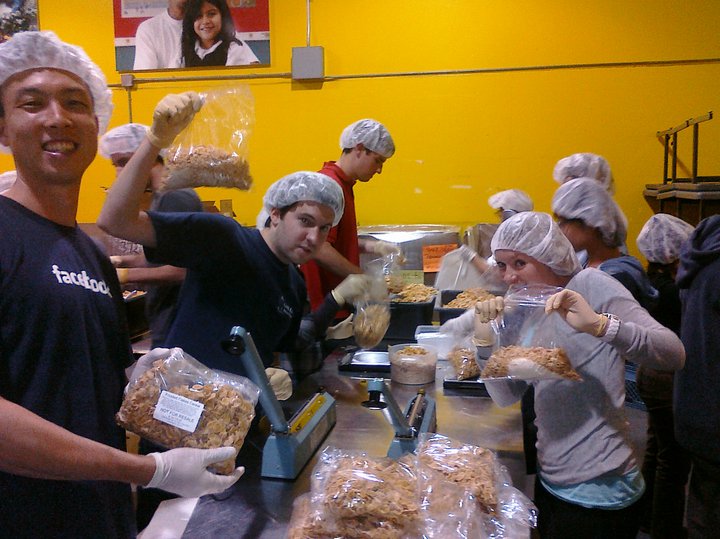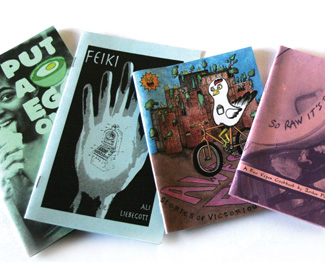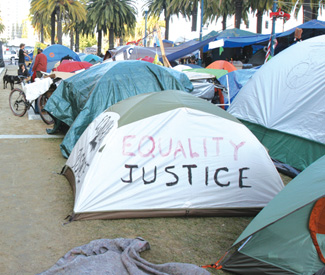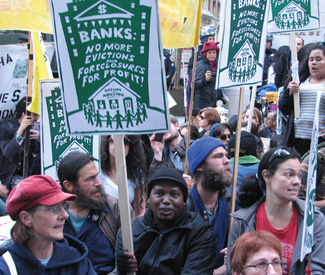Music listings are compiled by Emily Savage. Since club life is unpredictable, it’s a good idea to call ahead or check the venue’s website to confirm bookings and hours. Prices are listed when provided to us. Submit items for the listings at listings@sfbg.com. For further information on how to submit items for the listings, see Picks.
WEDNESDAY 14
ROCK/BLUES/HIP-HOP
Bells, Beehavers, Lila Nelson and the Job, Adios Amigo Bottom of the Hill. 9pm, $8.
“Blue Bear School of Music Band Showcases” Cafe Du Nord. 7:30pm, $12-$20.
Brandi Carlile, Secret Sisters Slim’s. 8pm, $32.
Chris Robinson Brotherhood Great American Music Hall. 8:30pm, $26.
Digitalism, Data Romance, Anna Lunoe Mezzanine. 9pm, $20.
Intersteller Grains, Neurovoltaic Orchestra, one f Elbo Room. 9pm, $5.
Jason King Band Biscuits and Blues. 8 and 10pm, $15.
Jason Marion vs. Jeff Johnny Foley’s Dueling Pianos. 9:30pm.
Mighty Diamonds, Native Elements, Revival Sound System Independent. 9pm, $20.
Misisipi Mike & the Ardent Sons, Lydia & the Projects Knockout. 9pm. $6.
Night Genes, Houndstooth, Garrett Pierce Hemlock Tavern. 9pm, $6.
Terry Savastano Johnny Foley’s. 9pm, free.
Shell Corporation, Shotdown Hemlock Tavern. 6pm, $5.
Jesse Sykes & the Sweet Hereafter Amoeba Music, 1855 Haight, SF; www.amoeba.com. 6pm, free.
JAZZ/NEW MUSIC
Cat’s Corner with Nathan Dias Savanna Jazz, 2937 Mission, SF; www.savannajazz.com. 9pm.
Cosmo AlleyCats Le Colonial, 20 Cosmo Place, SF; www.lecolonialsf.com; 7-10pm.
Dink Dink Dink, Gaucho, Michael Abraham Amnesia. 7pm, free.
Greg Gotelli Quartet Mejool, 2522 Mission, SF; www.medjoolsf.com. 6-9pm, free.
Mad Ratio: Tom Bickley & Adria Otte Meridian Gallery, 535 Powell, SF. 7:30, $5-$10.
Ricardo Scales Top of the Mark, 999 California, SF; www.topofthemark.com. 6:30pm, $5.
Tuck & Patti Yoshi’s. 8pm, $20.
DANCE CLUBS
Booty Call Q-Bar, 456 Castro, SF; www.bootycallwednesdays.com. 9pm. Juanita MORE! and Joshua J host this dance party.
Coo-Yah! Som., 2925 16th St, SF; (415) 558-8521. 10pm, free. DJs Daneekah and Green B spin reggae and dancehall with weekly guests.
Mary Go Round Lookout, 3600 16th St, SF; www.lookoutsf.com. 10pm, $5. Drag with Suppositori Spelling, Mercedez Munro, and Ginger Snap.
Megatallica Fiddler’s Green, 1333 Columbus, SF; www.megatallica.com. 7pm, free. Heavy metal hangout.
Vespa Beat Bliss Bar, 4026 24th St., SF; www.blissbarsf.com. 9pm, free. MSK.fm spins raregrooves, electroswing, and boogie.
THURSDAY 15
ROCK/BLUES/HIP-HOP
Baths, DNTL, Raleigh Moncrief Slim’s. 8pm, $15-$18.
Blasted Canyons, Hot Victory, Pow!, Mallard Thee Parkside. 9pm, $7.
Brothers Goldman Boom Boom Room. 8pm, $7.
Daniel Castro Biscuits and Blues. 8 and 10pm, $15.
Chris Robinson Brotherhood Great American Music Hall. 8:30pm, $26.
Dazzling Strangers, Tender Few, Virgil Shaw Bottom of the Hill. 9pm, $10.
Tommy Guerrero and friends Cafe Du Nord. 9pm, $10-$20. SF Food Bank benefit.
Jeff vs. Rags Tuttle Johnny Foley’s Dueling Pianos. 9:30pm.
John Lawton Trio Johnny Foley’s. 9pm, free.
Love Inks, Melted Toys, Tidelands Hemlock Tavern. 9pm, $8.
Misisipi Mike and the Midnight Gamblers Amnesia. 9pm,$7.
“Nat Keefe Concert Carnival” Independent. 8pm, $20-$35.
Oh Land, Young Digerati Rickshaw Stop. 9pm, $12.
Slim Man Showroom, 1000 Van Ness, SF; www.theshowroomsf.com. 8pm, $15.
Thanks for Leaving, Tunestone, Libertine Circle DNA Lounge. 5:30pm, $12.
Voxel, Beautiful Losers, Essence El Rio. 8pm, $5.
Yip Deceiver, Shock, Loose Shus, Tres Lingerie Milk,1840 Haight, SF; www.milksf.com. 8pm, $6.
JAZZ/NEW MUSIC
Blues organ party Royal Cuckoo, 3202 Mission, SF; www.royalcuckoo.com. 7:30pm, free.
Tom Lander & Friends Mejool, 2522 Mission, SF; www.medjoolsf.com. 6-9pm, free.
Savanna Jazz Jam with Nora Maki Savanna Jazz, 2937 Mission, SF; www.savannajazz.com. 7:30pm, $5.
Marc Schwartz Blondlogic, 792 Arguello, SF; www.blondlogic.com. 7-10pm, free.
Stompy Jones Top of the Mark, 999 California, SF; www.topofthemark.com. 7:30pm, $10.
Tuck & Patti Yoshi’s. 8pm, $24.
FOLK/WORLD/COUNTRY
Twang! Honky Tonk Fiddler’s Green, 1330 Columbus, SF; www.twanghonkytonk.com. 5pm. Live country music, dancing, and giveaways.
DANCE CLUBS
Afrolicious Elbo Room. 9:30pm, $5. With Pleasuremaker, Senor Oz spin Afrobeat, Tropicália, electro, samba, and funk, with special guest DJ Farid.
Arcade Lookout. 9pm, free. Indie dance party.
Get Low Som., 2925 16th St, SF; (415) 558-8521. 10pm, free. Jerry Nice and Ant-1 spin Hip-Hop, 80’s and Soul with weekly guests.
Stax vs. Motown John Colins, 138 Minna, SF; www.johncolins.com. 9pm, $5. Four turntables featuring DJs Gordo and Timo, E da Boss, Kung Fu Chris, and Hubcap Jones.
Thursdays at the Cat Club Cat Club. 9pm, $6 (free before 9:30pm). Two dance floors bumpin’ with the best of 80s mainstream and underground with DJ’s Damon, Steve Washington, Dangerous Dan, and guests.
Tropicana Madrone Art Bar. 9pm, free. Salsa, cumbia, reggaeton, and more with DJs Don Bustamante, Apocolypto, Sr. Saen, Santero, and Mr. E.
FRIDAY 16
ROCK/BLUES/HIP-HOP
Lurrie Bell Biscuits and Blues. 8 and 10pm, $20.
Beltones, Workin’ Stiffs, Sydney Ducks, Paper Bags Thee Parkside. 9pm, $8.
Black Label Society Regency Ballroom. 8pm, $32.
Cruciamentum, Dispirit, Anhedonist, Acephalix, Ritual Necromancy Elbo Room. 8pm, $10.
Daughtry, Plain White T’s Nob Hill Masonic Center, 111 California, SF; www.masonicauditorium.com. 8pm, $39.50-$89.50.
Howell Devine, Mr. December Amnesia. 7pm, $5.
D.R.I, Attitude Adjustment, Contrast the Water Slim’s. 8pm, $17.
Her Space Holiday, Silver Swans Bottom of the Hill. 9pm, $12.
Hybrid Public Works. 10pm, $10-$15.
Knux Cafe Du Nord. 9:30pm, $10-$12.
Billy Martin & Will Blases Duo, Eric Krasno Boom Boom Room. 10pm, $20.
Mental 99 Make-Out Room. 7:30pm, $8.
Mondo Phase Band Bender’s. 9pm, $5-$10. Save KUSFbenefit.
North American Scum, Roy G Biv, Mnemonic Devices, Hey Rogue Kimo’s. 9pm, $8.
Phantom Kicks, Bad Bibles, Mist Giant Hemlock Tavern. 9:30pm, $6.
Pharcyde Yoshi’s. 10:30pm, $30.
Randy, Jason Marion, Jeff Johnny Foley’s Dueling Pianos. 9pm.
Sambada, Afrolicious Independent. 9pm, $15.
Tall Shadows Johnny Foley’s. 9pm, free.
JAZZ/NEW MUSIC
Ben Bacot Savanna Jazz, 2937 Mission, SF; www.savannajazz.com. 7:30pm, $8.
Black Market Jazz Orchestra Top of the Mark, 999 California, SF; www.topofthemark.com. 9pm, $10.
Canadian Brass for the Holidays Yoshi’s. 8pm, $40.
Billy Martin and Will Blades, Eric Kraso Boom Boom Room. 9:30pm, $20.
FOLK/WORLD/COUNTRY
Cash’d Out Brick and Mortar. 9pm, $10-$15.
Mana Maddy & Family Cafe Royale, 800 Post, SF; (415) 441-4099. 7:30pm.
“Youth Mariachi Holiday Concert” Mission Cultural Center Theater, 2868 Mission, SF; www.missionculturalcenter.org. 7:30pm, $10.
DANCE CLUBS
“An Evening with Innervisions” Monarch, 101 Sixth St., SF; www.monarchsf.com. 10pm. $15-$20. With ÂME (live), Marcus Worgull, and residents Christian Mora, Lance Desardi, and Solar.
DJ What’s His Fuck Riptide Tavern, 3639 Taraval, SF; (415) 681-8433. 9pm, free. Spinning old school punk.
Hella Tight Amnesia. 10pm, $5.
Hubba Hubba Review: Chrismanukkah DNA Lounge. Holiday burlesque and live music by Meshugga Beach Party.
Oldies Night Knockout. 9pm, $2-$4. Doo-wap, one hit wonders, rock’n’roll with DJ Primo, Daniel, and Lost Cat.
Old School JAMZ El Rio. 9pm. Fruit Stand DJs spinning old school funk, hip-hop, and R&B.
Paris to Dakar Little Baobab, 3388 19th St, SF; (415) 643-3558. 10pm, $5. Afro and world music with rotating DJs including Stepwise, Steve, Claude, Santero, and Elembe.
Pledge: Fraternal Lookout. 9pm, $3-$13. Benefiting LGBT and nonprofit organizations. Bottomless kegger cups and paddling booth with DJ Christopher B and DJ Brian Maier.
Triple Threat DJs Mighty. 9pm, free. With Shortkut, Apollo, and Vinroc.
SATURDAY 17
ROCK/BLUES/HIP-HOP
Atomic Wafflehaus, Jammists Thee Parkside. 3pm, free.
Lurrie Bell Biscuits and Blues. 8 and 10pm, $20.
Dreamdate, Aerosols, Primitive Hearts Hemlock Tavern. 9:30pm, $6.
Jeff, Rags Tuttle, Jason Marion Johnny Foley’s Dueling Pianos. 9pm.
Lagwagon, Druglords of the Avenues, Heartsounds Slim’s. 9pm, $20.
Madball, Rotting Out, Take Offense, Living Eyes Thee Parkside, 9pm, $15.
Billy Martin & Will Blases Duo, Eric Krasno Boom Boom Room. 10pm, $20.
Mixers Johnny Foley’s. 9pm, free.
Mother Hips, Kelley Stoltz Great American Music Hall. 9pm, $23.
David Nachmanoff Showroom, 1000 Van Ness, SF; www.theshowroomsf.com. 9:30pm, $25.
Pharcyde Yoshi’s Lounge. 10:30pm, $25.
Pinback, Ghetto Blaster Bottom of the Hill. 10pm, $20.
Shame Spiral Public Works. 9pm, $5-$10.
Slow Motion Cowboys Riptide Tavern, 3639 Taraval, SF; (415) 681-8433. 9pm, free.
Slow Poisoner, Buxter Hoot’n, David and Joanna, Fear of Math Brick and Mortar. 9pm, $15. Holiday Fundraiser for Save KUSF.
JAZZ/NEW MUSIC
Canadian Brass for the Holidays Yoshi’s. 8pm, $40.
Billy Martin and Will Blades, Eric Kraso Boom Boom Room. 9:30pm, $20.
Suzanna Smith Savanna Jazz, 2937 Mission, SF; www.savannajazz.com. 7:30pm $8.
FOLK/WORLD/COUNTRY
Saturday Night Salsa Ramp, 855 Francois, SF; www.facebook.com/therampsf. 5:30pm, $10.
DANCE CLUBS
“Bay 2 LA: Beatrock Anniversary” Workspace Limited, 2150 Folsom, SF; www.beatrockmusic.com. 8pm, $12.
Bootie SF: Hubba Hubba Xmas DNA Lounge. 9pm, $18-$15. Holiday-themed mashup burlesque show.
Fringe Madrone Art Bar. 9pm, $5. Indie music video dance party with DJ Blondie K and subOctave.
Icee Hot Public Works. 9pm, $10. With Juan Atkins, Balam Acab, oOoOO.
O.K. Hole Amnesia. 9pm, $5-$7.
Paris to Dakar Little Baobab, 3388 19th St, SF; (415) 643-3558. 10pm, $5. Afro and world music with rotating DJs including Stepwise, Steve, Claude, Santero, and Elembe.
Saturday Night Soul Party Elbo Room. 10pm, $5-$10. DJs Lucky, Paul Paul, and Phengren Oswald spinning ’60s soul 45s.
Smiths Night SF Rock-It Room. 9pm, free. Revel in 80s music from the Smiths, Joy Division, New Order, and more.
Radio Franco Bissap, 3372 19th St, SF; (415) 826 9287. 6 pm. Rock, Chanson Francaise, Blues. Senegalese food and live music.
Wild Nights: Givers and Receivers Kok BarSF, 1225 Folsom, SF; www.kokbarsf.com. 9pm, $3. With DJ Frank Wild.
SUNDAY 18
ROCK/BLUES/HIP-HOP
Animal Eyes, Coast Jumper, Duckyousucker Hemlock Tavern. 9pm, $6.
Freestyle Fellowship, Souls of Mischief, Medusa, Nocando Slim’s. 9pm, $21.
Go Time!, Bi-Marks, Blank Spots, Effluxus
Mother Hips, Kelley Stoltz Great American Music Hall. 8pm, $23.
Marissa Nadler, Emily Jane White Cafe Du Nord. 9pm, $14.
Rustangs, Arcadio, Owens Valley Dynamite Amnesia. 9pm, $7.
“San Francisco Rock Project Winter Holiday Rock Prom and Auction” Rickshaw Stop. 4pm, $10. With Ty Segall, Victims Family with Jello Biafra, and MC Adam Savage.
Terry Savastano Johnny Foley’s. 9pm, free.
Tight Little Ship, Dave End, Cheese on Bread Knockout. 9:30pm, $6.
Verbal Abuse, Continental, Monster Squad, SS Kaliert, Embrace the Kill Thee Parkside. 8pm, $8.
JAZZ/NEW MUSIC
Blues organ party with Lavay Smith and Chris Siebert Royal Cuckoo, 3202 Mission, SF; www.royalcuckoo.com. 7:30pm, free.
Jim Campilongo, Chris Kee, Tony Mason Yoshi’s. 8pm, $18.
Gaucho Gypsy Jazz Bliss Bar, 2086 24 St, SF; www,blissbarsf.com. 4:30-7:30pm, $10.
Tom Lander & Friends Mejool, 2522 Mission, SF; www.medjoolsf.com. 6-9pm, free.
Lloyd Gregory Band Biscuits and Blues. 8 and 10pm, $15.
Savanna Jazz Vocal Band Savanna Jazz, 2937 Mission, SF; www.savannajazz.com. 7pm, $5.
Tri-Cornered Tent Show, Libertas Musicians Union Local 6, 116 Ninth St, SF; www.afm6.org. 7:30pm, free.
FOLK/WORLD/COUNTRY
Sunday Night Salsa Ramp, 855 Francois, SF; www.facebook.com/therampsf. 5:30pm, $10.
Twang Sundays Thee Parkside. 4pm, free. With Whiskey Tango.
DANCE CLUBS
Batcave Club 93, 93 9th St, SF 10pm, $5. Death rock, goth, and post-punk with Steeplerot, XChrisT, Necromos and c_death.
Dub Mission Elbo Room. 9pm, $6. Dub, dupstep, roots, and dancehall with DJ Sep and Ludichris, and special set with U9Lift.
Fresh Ruby Skye, 420 Mason, SF; www.rubyskye.com. 6pm, $20.
Jock Lookout, 3600 16th St, SF; www.lookoutsf.com. 3pm, $2. Raise money for LGBT sports teams while enjoying DJs and drink specials.
La Pachanga Blue Macaw, 2565 Mission, SF; www.thebluemacawsf.com. 6pm, $10. Salsa dance party with live Afro-Cuban salsa bands.
MONDAY 19
ROCK/BLUES/HIP-HOP
Damir Johnny Foley’s. 9pm, free.
Niners, Solwave, Kiwi Time Elbo Room. 9pm, $5.
“Smile Christmas Extravaganza” Knockout. 9pm, $7. With Supernatural, Sasha Bell, Rita Braga, Harbours, Radius & the Spheres, and more.
JAZZ/NEW MUSIC
Bossa Nova Tunnel Top, 601 Bush, SF; (415) 722-6620. 8-11:30pm, free. Live acoustic Bossa Nova.
Natasha Miller’s Annual Holiday Concert Yoshi’s. 8pm, $16.
DANCE CLUBS
Death Guild DNA Lounge. 9:30pm, $3-$5. Gothic, industrial, synthpop with Decay, Joe Radio, and Melting Girl.
M.O.M. Madrone Art Bar. 6pm, free. DJs Timoteo Gigante, Gordo Cabeza, and Chris Phlek playing all Motown every Monday.
Sausage Party Rosamunde Sausage Grill, 2832 Mission, SF; (415) 970-9015. 6:30-9:30pm, free. DJ Dandy Dixon spins vintage rock, R&B, global beats, funk, and disco at this happy hour sausage-shack gig.
TUESDAY 20
ROCK/BLUES/HIP-HOP
Caspa Mezzanine. 9pm, $20.
G-Side, Main Attrakionz, Davinci Independent. 9pm, $15.
John Lawton Trio Johnny Foley’s. 9pm, free.
Re-Volts, Unk Atama, Rocketship Rocketship Knockout. 9:30pm, $6.
Tracey Shedd, Allen Clapp, Desario Hemlock Tavern. 9pm, $6.
JAZZ/NEW MUSIC
Brian McKnight Yoshi’s. 8pm, $45.
DANCE CLUBS
Brazilian Wax Elbo Room. 9pm, $7. With DJ Carioca and DJ P-Shot, Forro Brazuca performing live.
Eclectic Company Skylark, 9pm, free. DJs Tones and Jaybee spin old school hip hop, bass, dub, glitch, and electro.
Post-Dubstep Tuesdays Som., 2925 16th St, SF; (415) 558-8521.10pm, free. DJs Dnae Beats, Epcot, Footwerks spin UK Funky, Bass Music.


